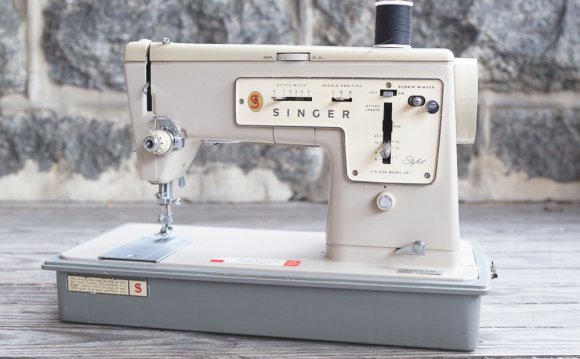
I won my Curvy in a quilting shop hop in Spring 2014, but never plugged it in until September, 2015. I had an old Singer that I knew like the back of my hand, but when the timing went and it had to go to the repair shop, I had to get the Curvy out of its box and give it a go as I was on a deadline. After reading the manual, plugging it in, and putting the pedal to the metal, I thought, “Wow, not too bad!” It ran smoothly and the stitches were very neat. Following are my opinions:
Cons:
1. Very difficult to change feet. The working area for screwing and unscrewing is limited due to the needle threader. The “screwdriver” supplied is difficult to handle; I have to use a real screwdriver.
2. My old Singer had in-machine bobbin winding. This one has to be wound on top of machine. Not difficult, and no problems so far, but why go backwards? It also does not have a low bobbin light like my old machine. Another backward feature! Neither is a major issue, though.
3. The LED lights are horrible!!! They are so dim it’s impossible to tell whether they’re on or not. I have to use additional lighting. I wish it had a bright light where the needle is.
4. The bed is too “curvy”, making it difficult to keep fabric going in a straight line. I make quilts, so for the small pieces it’s OK, but once the blocks start getting bigger the working surface of the bed to the left of the needle or in front of the needle isn’t big enough for me. I solved this problem by buying the extension table from Singer for classrooms, and a larger acrylic extension table for home. Problem solved, but extra expense!
5. The machine has a handle to carry it, but it would be awesome if it came with a carrying case. There appears to be one on the Singer website that can be purchased separately.
6. Accessories with the machine are limited. Had to purchase the walking foot separately.
Pros:
1. It’s lighter than my old Singer, so it’s easier to carry to classes. Has a built-in handle to make it easier to move around.
2. I like the wide range of decorative and utility stitches. I never used them much on my old machine as I had little to choose from, but I have been using these, and have been happy with the results.
3. The satin foot is a nice specialty tool to help prevent bunching of stitches when doing satin stitch.
4. No problems with tension or stitching so far. However, I’ve only been using this machine for quilting and fabric crafts. So far I’ve made several quilt tops, a fabric tote bag with piping (it handled the thick parts of the bag with no problems at all), table runners, pot holders, hot pads, etc.
5. I like the needle threader, which works best with the regular foot. Takes a little finagling with the walking foot.
6. Not sure how real heavy duty projects would be, but I’ve been very pleased with the way layered quilts (top, bottom, and batting) feed and stitch, though I think it’ll still be difficult to machine quilt anything too large because there’s not a lot of space in the throat area.
7. I love the needle positioning options to left or right, as well as mirror imaging of stitches.
8. One thing it has that my old machine didn’t: Up and down stop needle positions. I absolutely LOVE this feature!!!
So far, I really like this machine, and have not had to send it for repairs, yet. I’ve taken it to quite a few classes so far, and many times I’m the only one NOT fussing with bobbins or tension or threading. And I go to classes with people who have some major sewing machine investments!!! Prices on Amazon range from $387 to over $1, 000 (all the same model), so be careful. I believe this model was at my local Jo-Ann’s for about $425.









